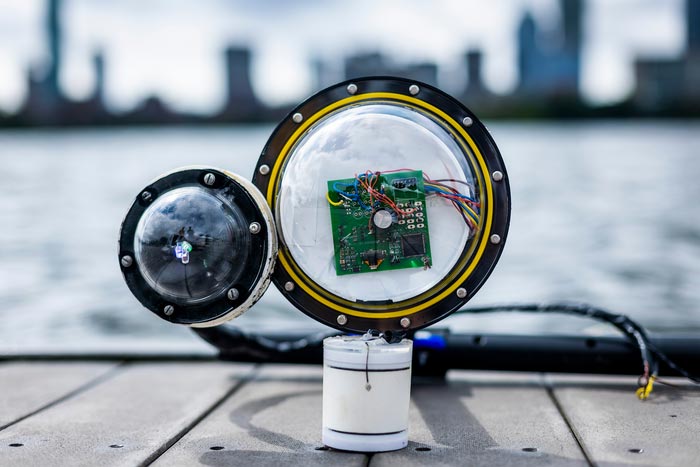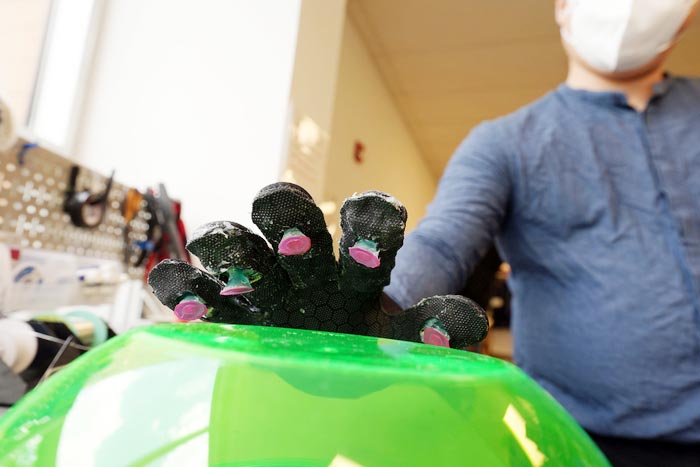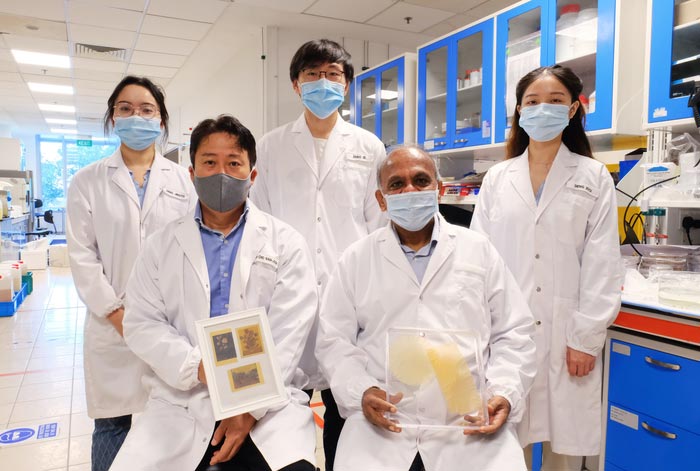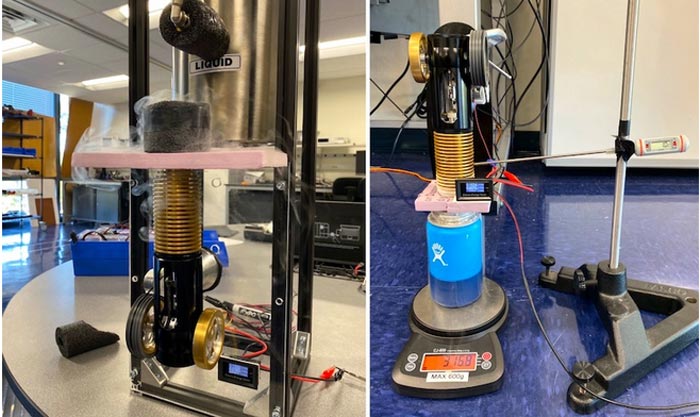
New Rail System Simplifies Child Seat Attachment to Wheelchairs

The seat can be adjusted to any position with only very little effort.
Credit: Koziel/TUK
The rail system, which curves around the wheelchair, resembles a bicycle frame. A child seat can be attached to it in a few simple steps. “The seat can be brought into any position via a rotary lever,” explains engineer Michael Weber from the Institute for Mechanical and Automotive Design at TUK.
This allows the driver of the wheel chair to place a child directly in the seat in a few easy steps, when the seat is to his or her right. Afterwards he or she can position the seat behind the wheelchair using a rotary lever. Thus the child seat does not negatively influence the overall width.
In 2016, the Department of Mechanical and Process Engineering came up with the idea for this work for a wheelchair user who had not been able to find a solution to transport her child safely in a wheelchair with any supplier.
As part of the so-called Idea Project in the Mechanical Engineering degree programme, student teams then dealt with this topic and designed various conceptual 3D models. This project work is offered early on in the Bachelor's programme and aims to enable students to engage in practical teamwork at the beginning of their studies.
Student Johannes Imhoff then continued working on one of the models as part of his Bachelor's thesis. Michael Weber and Hristo Apostolov from the Institute for Virtual Product Development supervised him. In the meantime, Johannes has turned it into a prototype and improved the technology.
The system manufactured by the central metal workshops and set up in the workshop of the institute consists of a thin-walled pipe system and is therefore relatively light. The mounting system with which the child seat can be locked in place is comparable to a bicycle carrier for trailer couplings.
It is designed for seats from nine to 13 kilograms as well as for 15 and more kilograms. “All in all, we made sure that the technology was easy to use and that a child could be seated in the seat without much effort,” says Imhoff.
They will present their work at the fair. “We hope to spark the interest of companies and show them that the idea works,” says Professor Dr Roman Teutsch, who heads the Institute for Mechanical and Automotive Design. Perhaps the prototype could in future become a product that helps disabled people to take their children with them easily and independently.
Klaus Dosch, Department of Technology and Innovation, is organizing the presentation of the researchers of the TU Kaiserslautern at the fair. He is the contact partner for companies and, among other things, establishes contacts to science.
Contact: Klaus Dosch, Email: dosch[at]rti.uni-kl.de, Phone (also during the fair): +49 631 205-3001
Michael Weber
Institute for Mechanical and Automotive Design (iMAD)
Phone: +49 631 205-4012
E-mail: michael.weber[at]mv.uni-kl.de












